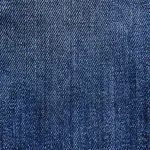Are you ready to add a touch of elegance to your fabric projects?
In this article, we’ll show you how to attach satin ribbon to fabric in a few simple steps.
You’ll learn how to choose the right ribbon, prepare your fabric, and effectively sew or use heat adhesive to attach the ribbon.
We’ll also explore adding ribbon trim to edges and incorporating it into decorative patterns.
Get ready to elevate your creations with the luxurious look of satin ribbon!
Table of Contents
Choosing the Right Satin Ribbon
To choose the right satin ribbon for your fabric, you’ll want to consider the color, width, and quality of the ribbon.
Satin ribbon comes in a wide range of colors, allowing you to find the perfect match for your fabric. Whether you’re looking for a bold and vibrant color or a subtle and neutral shade, there are plenty of options available. From classic black and white to vibrant reds, blues, and greens, you’ll be able to find a color that complements your fabric beautifully.
In addition to color, the texture of the ribbon is another important factor to consider. Satin ribbon comes in different textures, ranging from smooth and shiny to slightly ribbed or woven. The choice of texture depends on your personal preference and the overall look you want to achieve. A smooth and shiny satin ribbon can add a touch of elegance to your fabric, while a ribbed or woven texture can create a more casual or rustic look.
When choosing the width of the satin ribbon, consider the size and scale of your fabric project. A narrower ribbon works well for delicate fabrics or smaller projects, while a wider ribbon can make a bolder statement on larger pieces. Additionally, the quality of the ribbon is crucial to ensure it holds up well and doesn’t fray easily. Look for ribbons made from high-quality materials to ensure longevity and durability.
Preparing the Fabric for Ribbon Attachment
Before you can attach ribbon to your fabric, it’s important to prepare the fabric properly.
There are various techniques you can use to ensure that the ribbon adheres securely and looks neat.
Additionally, choosing the right ribbon is crucial for achieving the desired look and ensuring the longevity of your project.
Fabric Preparation Techniques
Make sure you iron the fabric before attaching the satin ribbon. This step is crucial in ensuring a smooth and wrinkle-free surface for ribbon attachment. To achieve the best results, follow these fabric preparation techniques:
-
Fabric Cutting Techniques: Before attaching the ribbon, make sure to cut the fabric to the desired shape and size. Use fabric scissors for precise cuts and avoid jagged edges.
-
Ironing: Use a steam iron to remove any wrinkles or creases from the fabric. Set the iron to the appropriate temperature for the fabric type and gently press the iron over the fabric, moving it in a back-and-forth motion.
-
Ribbon Attachment Tools: To attach the satin ribbon to the fabric, you will need the following tools: fabric glue, sewing pins, and a sewing machine (optional). The fabric glue will provide a strong bond, while sewing pins can help secure the ribbon in place before attaching it permanently. If you prefer a more durable attachment, you can use a sewing machine to stitch the ribbon onto the fabric.
Choosing the Right Ribbon
When choosing the right ribbon for your project, consider factors such as color, width, and texture.
Ribbon color options are vast, ranging from bold and vibrant shades to soft and subtle hues. Select a color that complements your fabric and enhances the overall look of your project.
Additionally, consider the width of the ribbon. A narrower ribbon is ideal for delicate projects, while a wider ribbon adds a bold and dramatic touch.
Lastly, take into account the texture of the ribbon. Satin, grosgrain, and organza are popular choices, each offering a unique look and feel. Compare ribbon materials to determine which one best suits your project.
Attaching Ribbon Securely
To ensure a secure attachment, it’s important to tie the ribbon tightly and use a strong adhesive if needed.
When attaching ribbon to fabric, there are several tips to keep in mind. Firstly, consider using a needle and thread to sew the ribbon onto the fabric. This method provides a strong and durable attachment.
Alternatively, you can use fabric glue or a hot glue gun to secure the ribbon in place. However, be cautious when using adhesive, as it may not be as long-lasting as sewing.
Another option is to use decorative stitching or embroidery to attach the ribbon. This adds an extra touch of elegance to your project.
Whichever method you choose, make sure the ribbon is securely fastened to avoid any potential unraveling or slipping.
Sewing Satin Ribbon Onto Fabric
When it comes to attaching ribbon to fabric, it’s important to know the best techniques to achieve a secure and professional-looking result.
In this discussion, we will explore the top ribbon attachment techniques, such as stitching, gluing, and iron-on adhesive.
Additionally, we will delve into the factors to consider when choosing the width of your ribbon, including the overall design aesthetic and the functionality of the finished project.
Best Ribbon Attachment Techniques
You can achieve the best ribbon attachment techniques by using a needle and thread to sew it onto the fabric. When it comes to ribbon attachment tools, a sharp needle and matching thread are essential. Make sure to choose a needle size that is suitable for the fabric and ribbon thickness.
To start, position the ribbon on the fabric, ensuring it is straight and even. Pin it in place if necessary. Begin stitching by inserting the needle through the fabric and ribbon, then pulling it up and down in a straight line. Use small, even stitches to secure the ribbon firmly. Take your time to ensure neat and precise stitching.
With these tips for ribbon placement and the right tools, you can achieve professional-looking results.
Choosing Ribbon Width
Now that you know the best techniques for attaching ribbon to fabric, let’s talk about choosing the right ribbon width.
When it comes to satin ribbon, the width you choose can greatly impact the overall look of your project. The width of the ribbon should complement the size of the item you are embellishing.
For smaller items, like hair accessories or cards, a narrower ribbon, around 1/4 inch to 1/2 inch, works well. For larger projects, like clothing or home decor, you can opt for wider ribbons, ranging from 1 inch to 2 inches or more.
Remember to consider the satin ribbon color and texture as well, as they can add depth and visual interest to your finished piece.
Using Heat Adhesive to Attach Satin Ribbon
Applying heat adhesive is a quick and efficient way to attach satin ribbon to fabric. It offers several advantages over traditional sewing methods.
One of the main benefits is its speed. With heat adhesive, you can attach the ribbon to the fabric in a matter of seconds, saving you valuable time.
Additionally, heat adhesive provides a strong bond between the ribbon and fabric, ensuring that it stays in place even after multiple washes.
Another advantage is its versatility. Heat adhesive can be used on a variety of fabrics, including delicate ones like silk or chiffon.
However, there are alternatives to heat adhesive that you may consider. Sewing the ribbon onto the fabric is a popular method, especially if you prefer a more traditional look. This method requires more time and skill, but it allows for more customization options, such as different stitch patterns or thread colors.
Another alternative is using fabric glue. While fabric glue can be effective in attaching the ribbon, it may not provide the same level of durability as heat adhesive.
Adding Satin Ribbon Trim to Edges
To add a satin ribbon trim to the edges, simply measure and cut the desired length of ribbon for each edge. Here are some different ribbon attachment methods you can try:
-
Sewing: Use a needle and thread to carefully stitch the ribbon onto the fabric. This method ensures a secure and durable attachment.
-
Gluing: Apply a fabric glue or adhesive to the back of the ribbon and press it firmly onto the fabric. This is a quick and easy method, but may not be as long-lasting as sewing.
-
Fusing: If you have a satin ribbon with heat-activated adhesive backing, simply place the ribbon onto the fabric and use an iron to bond them together. This creates a strong bond without the need for sewing or gluing.
-
Stapling: For a temporary attachment, you can use a stapler to secure the ribbon onto the fabric. This method is quick and easy, but may not be suitable for delicate fabrics.
-
Pinning: If you want to experiment with different ribbon placements before making a permanent attachment, use straight pins to hold the ribbon in place. This method allows for easy adjustments.
Remember to choose satin ribbon colors that complement your fabric for a beautiful and stylish trim.
Incorporating Satin Ribbon Into Decorative Patterns
If you’re looking to incorporate satin ribbon into decorative patterns, consider using it to create intricate bows or weaving it through the fabric for added texture and dimension.
Satin ribbon is a versatile and elegant material that can bring a touch of sophistication to any project.
One popular way to incorporate satin ribbon into decorative patterns is by creating bows. These can be used to embellish gifts, hair accessories, or even clothing.
To create an intricate bow, start by making a loop with the ribbon and securing it in the middle. Then, create two more loops on each side, making sure they are slightly smaller than the first loop. Finally, gather all the loops together and secure them in the middle with a small piece of ribbon.
Another way to incorporate satin ribbon into decorative patterns is by weaving it through the fabric. This can be done by hand or using a sewing machine. Simply thread the ribbon through the fabric in a desired pattern, creating a unique and eye-catching design.
Whether you choose to create bows or weave the ribbon through the fabric, satin ribbon is sure to add a touch of elegance to any project. So get creative and have fun exploring different ribbon embellishment techniques to create stunning decorative ribbon patterns.
Attaching Satin Ribbon to Delicate Fabrics
Now that you’ve learned how to incorporate satin ribbon into decorative patterns, let’s dive into the process of attaching satin ribbon to delicate fabrics. This is an important skill to master, as delicate fabrics require special care to avoid damage.
When attaching satin ribbon to delicate fabrics, there are a few key factors to consider. Firstly, you’ll want to choose the right satin ribbon color option to complement your fabric. Whether you opt for a subtle tone or a bold contrast, the color choice can greatly enhance the overall look of your project.
To ensure the longevity of your satin ribbon and fabric, here are some care tips to keep in mind:
- Gently hand wash your fabric and satin ribbon together using mild detergent.
- Avoid using bleach or harsh chemicals that can cause discoloration or damage.
- Dry the fabric and ribbon flat to prevent stretching or warping.
- Store your project in a cool, dry place to avoid humidity and potential moisture damage.
- If ironing is necessary, use a low heat setting and place a thin cloth between the iron and the satin ribbon to prevent direct heat contact.
Finishing Touches and Care Instructions
When caring for delicate fabrics, it’s important to follow these tips to ensure the longevity and beauty of your project.
After attaching satin ribbon to your fabric using the appropriate techniques, it’s crucial to take proper care of the finished piece.
First and foremost, always check the care instructions provided by the fabric manufacturer. This will give you important information on how to clean and maintain the fabric.
In general, delicate fabrics should be hand washed or dry cleaned to avoid any damage. When washing by hand, use a gentle detergent and lukewarm water. Avoid scrubbing or wringing the fabric as this can cause stretching or distortion. Instead, gently squeeze out excess water and lay the fabric flat to dry.
To prevent wrinkling, you can iron the fabric on a low heat setting. However, it’s always a good idea to test a small, inconspicuous area first to ensure that the iron does not damage the fabric.
Conclusion
In conclusion, attaching satin ribbon to fabric can be a simple and beautiful way to enhance your garments or crafts.
By choosing the right ribbon, preparing the fabric properly, and using the right techniques, you can achieve professional-looking results.
Whether you choose to sew the ribbon on or use heat adhesive, make sure to take care when working with delicate fabrics.
Don’t forget to add finishing touches and follow care instructions to ensure your ribbon stays in place and your fabric remains in good condition.
Happy crafting!
- Tetron Fabric for Marine Applications: Durability and Use Cases - June 18, 2025
- Tetron Fabric for Outdoor Furniture: Weather Resistance and Care - June 18, 2025
- Tetron Fabric for Wall Coverings: Style and Application Tips - June 18, 2025





